If some of the terms used in this page are unknown, you are invited to read the Glossary of the terms.
When it comes to pan pizza, probably the best known is the Roman Pan Pizza. In Rome this is sold thin and crusty for the traditional, called also “Scrocchiarella” as it makes cracks sound when you bite it. It can be higher for the modern or gourmet versions. The best tray’s material for cooking it is called Blue Iron but if you don’t have you can use any tray with oil or also with baking paper.
Theory
70% Hydration
2.4% Salt
3% Oil
Flour:
Plain flour for fast procedure (3-4 hours)
or
Pizza or Bread flour for longer fermentations
Tip: you can make a blend adding 10% of durum or wholemeal flour to enrich the taste
Procedure Variant 1 (at least 3 hours RT):
- Kneading
- Folds (if needed)
- Puntata in an oiled container with lid until it doubles in size
- Staglio
- Appretto in an oiled containers with lid until it doubles in size
Cooking in a static home oven at 250 degrees with only the tomato sauce putting the tray on the bottom of the oven for about 6 minutes and then with the half-height gride for about 6 minutes. Add the mozzarella and complete cooking in 2-3 minutes (the time to melt the mozzarella).
Remove from the tray and leave to dry for a few minutes in a gride.

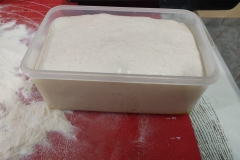
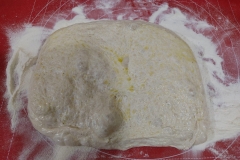
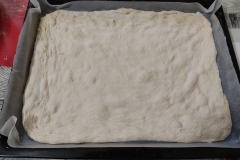
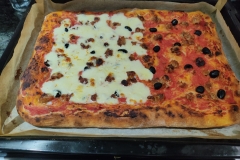
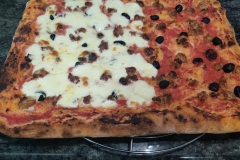
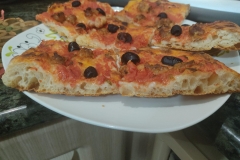
Very helpful😃,Thank you for taking the time to share your knowledge..I am a home hobbyist baker who really enjoys all styles pizza & bread.Both my parents emigrated to USA from Basilicata Italy in 1960’s and I love trying to recreate foods of my childhood.Mostly the poor simple things.The home style foods are nostalgic and connect me to my roots..For me is nothing better then Italian home style food!
Hi Francesco, thank you for your message, really appreciated. I grew up in Sicily, my father is from Basilicata too and I’ve been living in Malta for 11 years. The section in Italian of the website has more materials but I will translate soon everything in English. I’ve also a Facebook page, Instagram and a YouTube channel in English. I’ve started producing my own fresh and dry pasta and I do consulting sessions on demand. Do not hesitate to contact me if you need any help. Have a great day
Flour won’t change fermentation speeds, improver changes fermentation, improver is added to dough to speed fermentation up to being able to use a bread dough in as little as 20 minutes, instead of waiting hours.
By adding wholemeal you should being adding a bit of gluten as wholemeal rips gluten strands.
Hi Andrew, Thank you for youre contribution. I did not get exacly parts of your message so I’m goign to quote and comment:
My calculator does take in consideration the flour type but calculates only the proportions and quantities. The flour in reality can speedup the fermentation as more bran means more enzimes but my calculator does not takes this factor in consideration.
To which improver are you referring to? There are multiple and with different effects, and the results also depends on the quatities used, so for example you could use Diastatic Malt to speedup your process or just because you want a more brown colour in the crust. By the way I do not suggest to make any pizza in less than 3 hours.
Wholemeal in this case if added as little as 10% it won’t affect that much the gluten of the recipe but rather will affect the final hydration and taste.